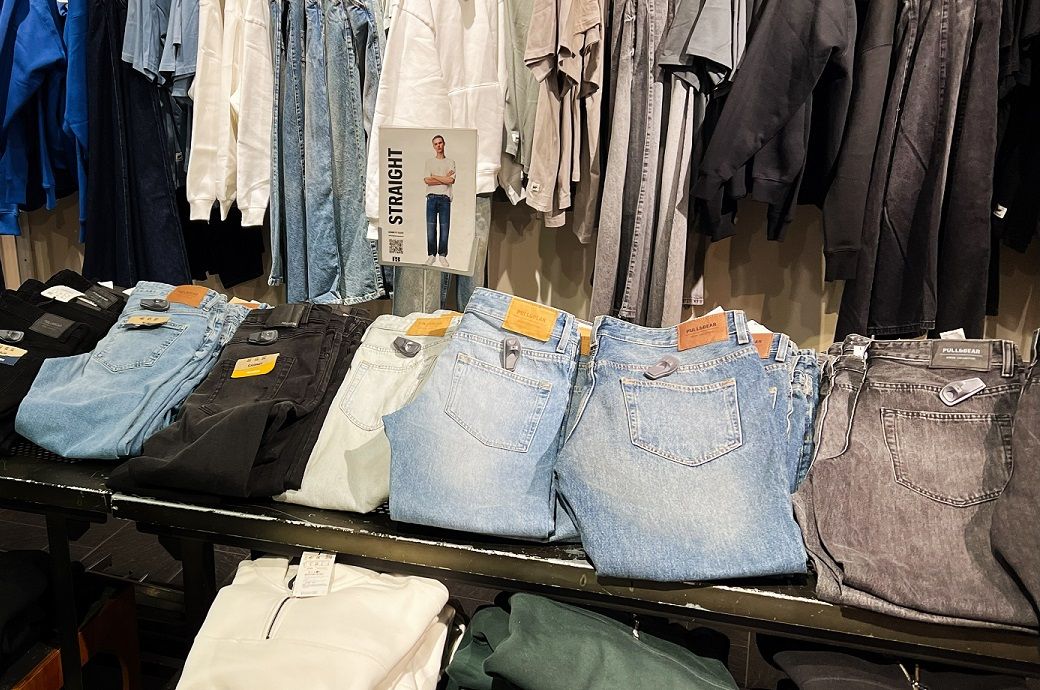Fashion
Seoul-designed Sisley K to make UK debut during London Fashion Week

Published
September 17, 2025
The Benetton-owned Sisley apparel brand’s premium Sisley K label will debut in the UK during this week’s London fashion week following its arrival in Rome and Florence.
The group’s Oxford Street flagship will showcase the label that’s actually a project created in Seoul by a Korean design team and “aimed at a cosmopolitan woman, blending essential tailoring with urban minimalism in a modern key”.
It’s also part of a “broader international expansion project which will see the launch of new dedicated corners inside Benetton Group stores, starting with key locations”, including Rome (Cola di Rienzo), Milan (Corso Buenos Aires), Verona, Bologna, Bolzano, Palermo, Venice, and the OrioCenter mall at Bergamo’s Orio al Serio international airport.
The Sisley K autumn collection is built around two style inspirations: Poetic Romance, “which reinterprets boho elements with a romantic touch to create a fluid and sophisticated elegance”; and Day Traveler, a “versatile and practical everyday wardrobe designed for today’s modern, dynamic woman”.

Its Oxford Street debut will see the store’s large windows transformed into a digital installation with full-height arch screens displaying content “celebrating International Blue Klein and its connection with the Sisley K universe”. The experience will continue inside the store, with an area dedicated to Sisley K on the ground floor which will remain open after the conclusion of London Fashion Week.
The collection is currently available only in selected stores and online via the Sisley webstore.
Copyright © 2025 FashionNetwork.com All rights reserved.
Fashion
Lululemon to enter six new markets in 2026

Published
December 19, 2025
Lululemon announced on Thursday plans to expand its international footprint in 2026 with six new market entries, marking the largest number of new country launches the brand has undertaken in a single year.
The expansion will be carried out through Lululemon’s new franchise partnership model and will include entries into Greece, Austria, Poland, Hungary and Romania, alongside a previously announced move into India.
The European launches will be executed in partnership with Arion Retail Group, while Lululemon’s entry into India will be supported by a partnership with Tata CLiQ.
Consumers in Greece, Austria, Poland, Hungary and Romania will be able to shop Lululemon’s full assortment online, while customers in India will have digital access through Tata CLiQ Luxury and Tata CLiQ Fashion. Physical retail plans, including store locations and opening timelines, will be announced in the new year.
Community engagement will remain central to Lululemon’s expansion strategy, with the brand planning to extend its ambassador network and host local events focused on movement and wellbeing as it enters new regions.
“As we continue to see strong demand for the Lululemon brand around the world, we’re thrilled to grow our presence and communities across Europe and Asia Pacific with entry into six new markets in 2026,” said Sarah Clark, senior vice president, EMEA, Lululemon.
“Each of these markets offer exciting potential for our brand, and we look forward to working with our franchise partners to introduce our innovative products and engaging guest experiences to more consumers in these regions.”
The upcoming launches represent the latest step in Lululemon’s international growth strategy. The company currently operates in more than 30 markets globally, spanning North America, EMEA, Asia Pacific and mainland China. The new entries follow Lululemon’s expansion into Italy earlier this year, as well as recent franchise-led openings in Denmark, Turkey and Belgium.
Copyright © 2025 FashionNetwork.com All rights reserved.
Fashion
Weak demand drags US textiles & apparel exports down 3.6% in Jan–Sept

Shipments to major markets including Mexico, Honduras, the Dominican Republic, Canada, the United Kingdom, and China contracted, with declines of up to **.** per cent. Exports to Mexico fell *.** per cent to $*,***.*** million, signalling slower manufacturing activity in its export-oriented apparel sector, which relies heavily on US yarns and fabrics. Weakness in Honduras and the Dominican Republic similarly mirrors subdued orders from US brands, weighing on regional supply chains linked through CAFTA-DR as brands rebalance inventories and sourcing volumes.
By contrast, exports to the Netherlands, Japan, and Belgium rose by as much as **.** per cent. These gains were supported by steadier demand for technical textiles and niche fabrics, as well as sourcing adjustments by European manufacturers seeking to diversify material suppliers and reduce overdependence on a limited number of Asian inputs.
Fashion
Puma secures more than €600 million in additional financing facilities

By
DPA
Published
December 18, 2025
Sportswear business Puma has secured additional financing of more than €600 million. It comprises a €500 million facility and a further €108 million in committed credit lines, according to a statement on Thursday. The aim is to reduce utilisation of the existing €1.2 billion revolving credit facility while increasing the company’s financial flexibility.
The new €500 million facility is fully guaranteed by Santander Corporate & Investment Banking (Santander CIB). Both new financing instruments have maturities of up to two years.
Markus Neubrand, CFO of Puma SE, said: “While our existing syndicated credit facility and promissory notes remain available, today’s announcement will enhance our financial flexibility as we work to finalise our long-term financing structure. The fact that our banking partners have further expanded their commitment and business relationship underlines the confidence in our future business model and strategic direction. This will enable us to realise our strategic priorities and our goal of establishing Puma as a top-three sports brand worldwide.”
FashionNetwork.com with dpa
This article is an automatic translation.
Click here to read the original article.
-

 Business5 days ago
Business5 days agoHitting The ‘High Notes’ In Ties: Nepal Set To Lift Ban On Indian Bills Above ₹100
-

 Politics1 week ago
Politics1 week agoTrump launches gold card programme for expedited visas with a $1m price tag
-

 Business1 week ago
Business1 week agoRivian turns to AI, autonomy to woo investors as EV sales stall
-

 Sports1 week ago
Sports1 week agoPolice detain Michigan head football coach Sherrone Moore after firing, salacious details emerge: report
-

 Fashion1 week ago
Fashion1 week agoTommy Hilfiger appoints Sergio Pérez as global menswear ambassador
-

 Business1 week ago
Business1 week agoCoca-Cola taps COO Henrique Braun to replace James Quincey as CEO in 2026
-

 Sports1 week ago
Sports1 week agoU.S. House passes bill to combat stadium drones
-

 Tech1 week ago
Tech1 week agoGoogle DeepMind partners with UK government to deliver AI | Computer Weekly

















